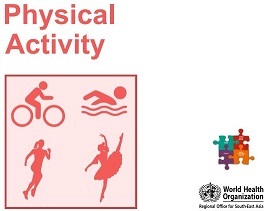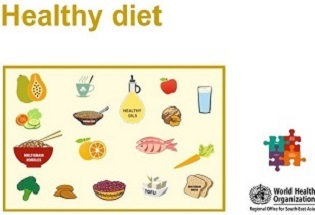Obesity and overweight
Countries in WHO South- East Asia are in a state of nutrition transition driven by the flourishing economic development, urbanization which have led to lifestyle changes. Unhealthy diets and lack of physical activity are the key causes. The ongoing nutrition transition in the Region is characterized by persistent under-nutrition and micronutrient deficiencies, and the emerging problem of over-nutrition. While South-East Asia has some of the lowest prevalence of overweight and obesity globally, they are seeing an alarming trend in the rates of increase in the last 10-15 years. An estimated 6.6 million young children under 5 years and one in five adults are currently overweight. The growing paradox of under-nutrition and obesity in the same population, commonly described as the double burden of malnutrition impacts health status of the population and is straining national health capacities.





